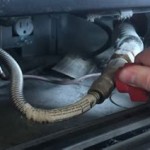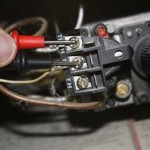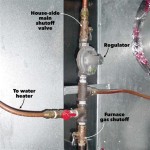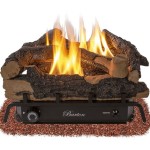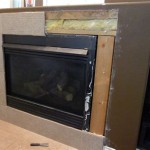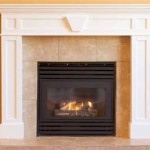Direct Vent Propane Fireplace Insert Reviews: A Comprehensive Guide
Direct vent propane fireplace inserts offer a convenient and efficient way to upgrade an existing masonry or zero-clearance fireplace. These inserts provide supplemental heat, aesthetic appeal, and ease of use, all while operating on clean-burning propane fuel. This article examines key aspects of direct vent propane fireplace inserts, including their functionality, advantages, considerations when selecting a unit, and reviews of popular models. Understanding these factors will assist in making informed decisions when considering a propane fireplace insert for a home.
A direct vent fireplace insert operates by drawing combustion air from outside the home and venting exhaust gases directly back outside through a coaxial or concentric vent system. This system is crucial for safety and efficiency, as it eliminates the need for a traditional chimney and prevents indoor air contamination. Unlike traditional fireplaces that draw heated air from the room and vent it outside, resulting in significant heat loss, direct vent inserts provide a closed combustion system that maximizes heat output and minimizes energy waste.
Propane-fueled fireplace inserts offer several advantages over wood-burning or electric alternatives. Propane burns cleanly, producing fewer emissions compared to wood, contributing to better air quality. It also provides consistent heat output, unlike wood, where heat intensity fluctuates based on the type and amount of wood being burned. Furthermore, propane offers convenience; no wood storage, hauling, or tending is required. The units are typically controlled by a thermostat or remote, allowing for precise temperature adjustments and effortless operation.
Understanding Direct Vent Systems
The "direct vent" designation refers to the venting system used by these fireplace inserts. The system operates on a closed-loop principle, meaning it takes air from outside the home for combustion and expels exhaust gases back outside without mixing with the indoor air. This is achieved through a dual-pipe system, typically coaxial (one pipe inside the other) or concentric (pipes side by side). The inner pipe carries exhaust gases, while the outer pipe draws in fresh air. This design ensures safe and efficient operation, eliminating the risk of carbon monoxide poisoning and preventing drafts.
The venting system must be installed according to the manufacturer's specifications and local building codes. Proper installation is crucial for safe and efficient operation. The vent pipes must be properly sealed to prevent leaks, and the termination point must be located in a safe area, away from windows, doors, and air intakes. The length and configuration of the vent system can affect the fireplace's performance, so it's essential to consult with a qualified installer to determine the appropriate venting system for a specific home and insert model.
The location of the existing fireplace and the home's construction will influence the complexity and cost of the venting installation. If a suitable chimney already exists, it can often be used to house the new direct vent system, simplifying the installation process. However, in some cases, a new vent system may need to be installed through an exterior wall or roof. This can involve additional construction work and expense.
Key Features and Considerations When Selecting a Propane Fireplace Insert
Several key features and factors should be considered when selecting a direct vent propane fireplace insert. These include heat output (measured in BTUs), heating capacity (the square footage the insert can effectively heat), efficiency rating, flame appearance, control options, and aesthetic design. Assessing these parameters allows for choosing a unit that adequately meets the heating needs and complements the style of the home.
Heat output, measured in British Thermal Units (BTUs), indicates the amount of heat the fireplace insert can produce per hour. The appropriate BTU rating depends on the size of the room and the climate. For smaller rooms or mild climates, a lower BTU rating may be sufficient, while larger rooms or colder climates will require a higher BTU rating. It’s crucial to avoid oversizing the unit, as this can lead to inefficient operation and discomfort.
Heating capacity refers to the square footage the insert can effectively heat. This is an estimate provided by the manufacturer and is based on average insulation levels and ceiling heights. It is important to consider the specific characteristics of a home when determining if a particular insert is appropriate. Homes with poor insulation or high ceilings may require a more powerful unit.
Efficiency rating indicates how effectively the insert converts fuel into heat. A higher efficiency rating means less fuel is wasted and more heat is delivered into the room. Direct vent propane fireplace inserts typically have efficiency ratings ranging from 70% to 90%. Choosing a model with a high efficiency rating can result in significant savings on propane costs over time.
Flame appearance is a significant factor for many homeowners. Different models offer varying flame patterns, colors, and realism. Some inserts feature realistic log sets and ember beds, while others offer more contemporary designs with glass media. It is advisable to view the flame display in person or online to assess its aesthetic appeal.
Control options include features such as thermostats, remote controls, and programmable timers. These features allow for convenient and precise control over the fireplace's operation. Thermostats maintain a consistent temperature, while remote controls allow for adjustments from across the room. Programmable timers can be used to automatically turn the fireplace on and off at specific times, further enhancing convenience and efficiency.
Aesthetic design encompasses the overall look and style of the insert. This includes the finish, door style, and log set or media options. Inserts are available in a variety of styles, from traditional to contemporary, to complement different interior design schemes. Choosing a model that blends seamlessly with the room's decor can enhance the overall aesthetic appeal.
Reviews of Popular Direct Vent Propane Fireplace Insert Models
Several direct vent propane fireplace insert models are consistently praised for their performance, efficiency, and design. These models represent a range of price points and features, catering to diverse needs and preferences. Examining these models can provide valuable insights into the features and performance characteristics of top-rated propane fireplace inserts.
The Regency P33 propane fireplace insert is often cited for its excellent heating performance and realistic flame appearance. It features a high BTU output, making it suitable for medium to large rooms. Its realistic log set and ember bed create a cozy and inviting atmosphere. It also boasts a high efficiency rating, contributing to lower propane costs. The Regency P33 typically includes a remote control for convenient operation.
The Napoleon BGD33 is known for its contemporary design and powerful heating capabilities. Its clean lines and minimalist aesthetic make it a popular choice for modern homes. It features a high BTU output and a wide viewing area, providing an excellent view of the flames. The Napoleon BGD33 also offers a variety of control options, including a programmable thermostat.
The Empire Comfort Systems Tahoe Deluxe is a more budget-friendly option that still delivers reliable performance and a pleasing aesthetic. It offers a decent BTU output for smaller rooms and features a realistic log set. It is a good option for homeowners who want to upgrade their fireplace on a budget. The Empire Tahoe Deluxe is known for its ease of installation and user-friendly operation.
The Valor G3 Series propane fireplace insert is often praised for its exceptional efficiency and natural-looking flames. Valor inserts are known for their radiant heating technology, which provides consistent and comfortable warmth. The G3 Series offers a variety of design options and control features, allowing homeowners to customize the insert to their specific needs and preferences. Valor products are typically positioned at the higher end of the price spectrum due to their advanced technology and superior build quality.
When selecting a direct vent propane fireplace insert, carefully assess the heating requirements, aesthetic preferences, and budget constraints. Consulting with a qualified fireplace retailer or installer can provide valuable guidance and ensure that the chosen unit is properly sized and installed for optimal performance and safety. Factors such as the size of the room to be heated, the level of insulation, and the climate will influence the ideal BTU output and heating capacity of the insert. Additionally, consider the venting requirements and ensure that the installation complies with all local building codes.

30 Ruby Contemporary Intellifire Touch Direct Vent Fireplace Insert Blower And Remote Electronic Ignition Majestic

Rushmore 30 Direct Vent Fireplace Insert Fine S Gas

Inserts Gas Kingsman Direct Vent Fireplace Insert Ipi Propane Idv33lpe

Direct Vent Gas Fireplace Insert By Napoleon Gdizc Rockford Chimney

Direct Vent Gas Fireplace Insert By Napoleon Gdizc Rockford Chimney

Kingsman Idv34 34 Inch Clean View Direct Vent Gas Fireplace Insert With Media

Breckwell Large Direct Vent Fireplace Insert Bh2818i Hvacdirect Com

Direct Vent Gas Fireplace Insert With Intellifire Touch Ignition Syste Wood Majestic

Superior Drl6000 St 60 Inch Electronic Ignition Direct Vent See Through Gas Fireplace With Remote

Bluegrass Living 34 In W 32000 Btu Black Vent Free Dual Burner Gas Fireplace Insert And Remote The Inserts Department At Com
Related Posts

